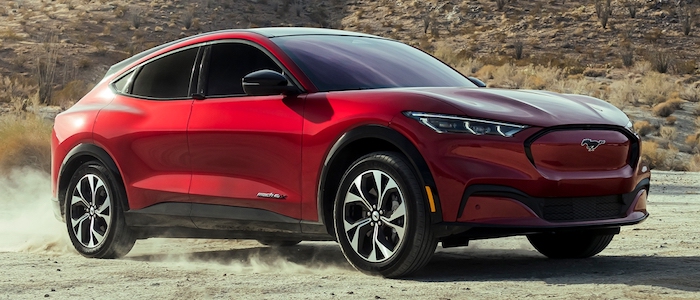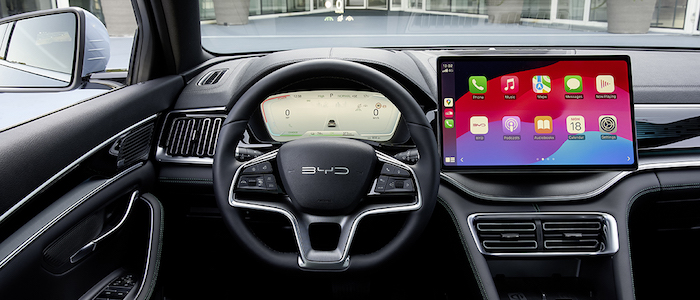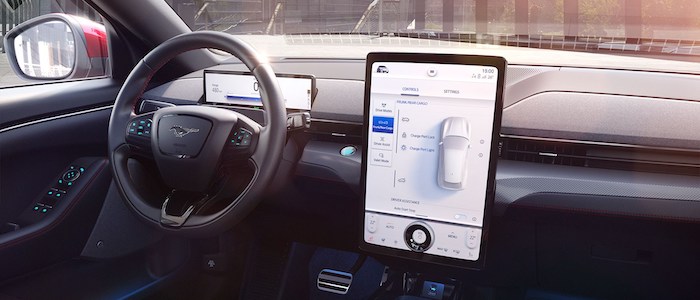Compare two cars
Compare any two cars and get our Virtual Adviser™ opinion
Dimensons & Outlines
Check vehicle history
Engine
Performance (manual gearbox)
Performance (automatic gearbox)
Expenses
Virtual Adviser's™ opinion
Two significantly similar cars, no doubt about that. Still, each one has something different to offer. Having both cars powered by electric engines and utilizing the 5-door suv body style within the same 'SUV' segment, the only major difference here really is their wheel drive configuration (front for the BYD and 4 x 4 in the case of the Ford). The first one has a BYD-engineered powertrain under the hood, a PMSM Electric unit in formation 1 / 0 with 218hp unit, while the other one gets its power and torque from a PMSM Electric unit in formation 1 / 1 with 269hp engine designed by Ford.
SafetyThe first thing to look into here would be the results from European New Car Assessment Programme (Euro NCAP) tests performed on the two cars. Good thing is that both vehicles got tested, with the same number of safety stars gained in the process. Still, apart from the official crash test results there are other things we need to be aware of. Both vehicles belong to the suv segment, which is generally a very good thing safety-wise, still it doesn't help us solve our dilemma, does it? Furthermore, if we'd like to consider vehicle mass in this context too, which we definitely should, the Chinese car offers a marginal difference of 3% more metal.
ReliabilityManufacturers have been building their reliability reputation for decades now and, generally speaking, it appears that BYD does have a slight advantage, all the models observed together. These are the results of an independent reasearch, while our visitors describe reliability of BYD with an average rating of , and models under the Ford badge with 4.4 out of 5. Unfortunatelly, I don't have enough insight that would allow me to comment in more details on the specific models level. We should definitely mention that owners of cars with the same powertrain as the Chinese car rank it on average as 3.0 out of 5, exactly the same as the other one.
Performance & Fuel economyFord is way more agile, reaching 100km/h in 3.3 seconds less than its competitor. In addition to that it accelerates all the way to 180 kilometers per hour, 5km/h more than the other car. When it comes to fuel economy things look pretty much the same for both cars, especially if you take into account all the free charging points provided by the manufacturer and/or the local government's environmental programs. One of the essential things to consider when it comes to this type of vehicles would be range, with throne undoubtedly being claimed by the Chinese car with its additional 162 kilometers on a single charge.
Verdict
Ford appears just a bit more reliable, although the difference is truly marginal. The most important thing when deciding between any two vehicles should always be safety, both passive and active. In my opinion, everything taken into account, the Chinese car offers slightly better overall protection and takes the lead. From there things take a different direction, with Ford outracing its opponent in any situation possible, making it better choice for boy racers. The Chinese car is incomparably more generous when it comes to range, which could (and potentially should) be a deal-breaker for the other contender. No mistake, whatever you decide here, but I'd still go for the BYD. Anyway, that's the most objective conclusion I could've came up with and it's based solely on the information found on this website. Aspects such as design, practicality, brand value and driving experience are there for you to measure them out. In case you have two minutes to spare I invite you to define your needs, desires and budget and see which car would be chosen by the virtual adviser™, among thousands of similar, yet so different vehicles.































